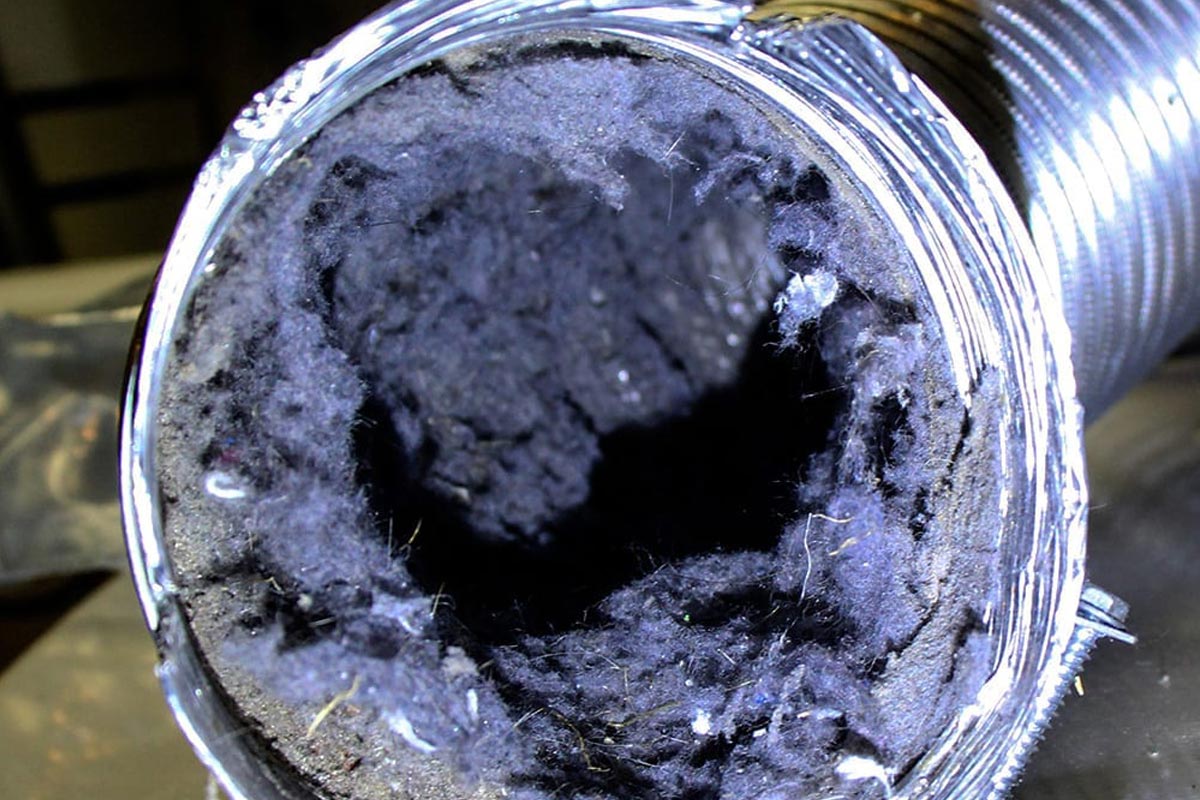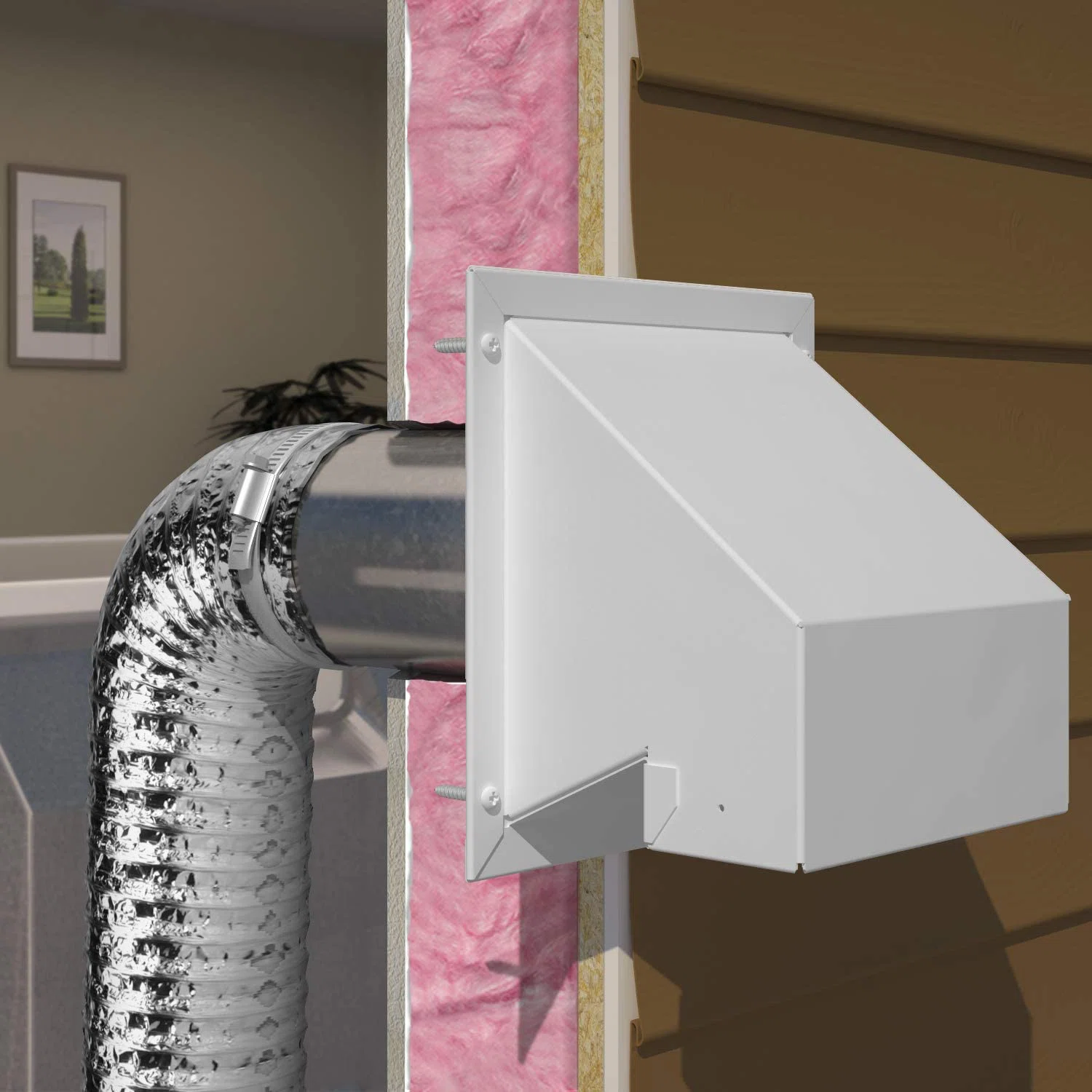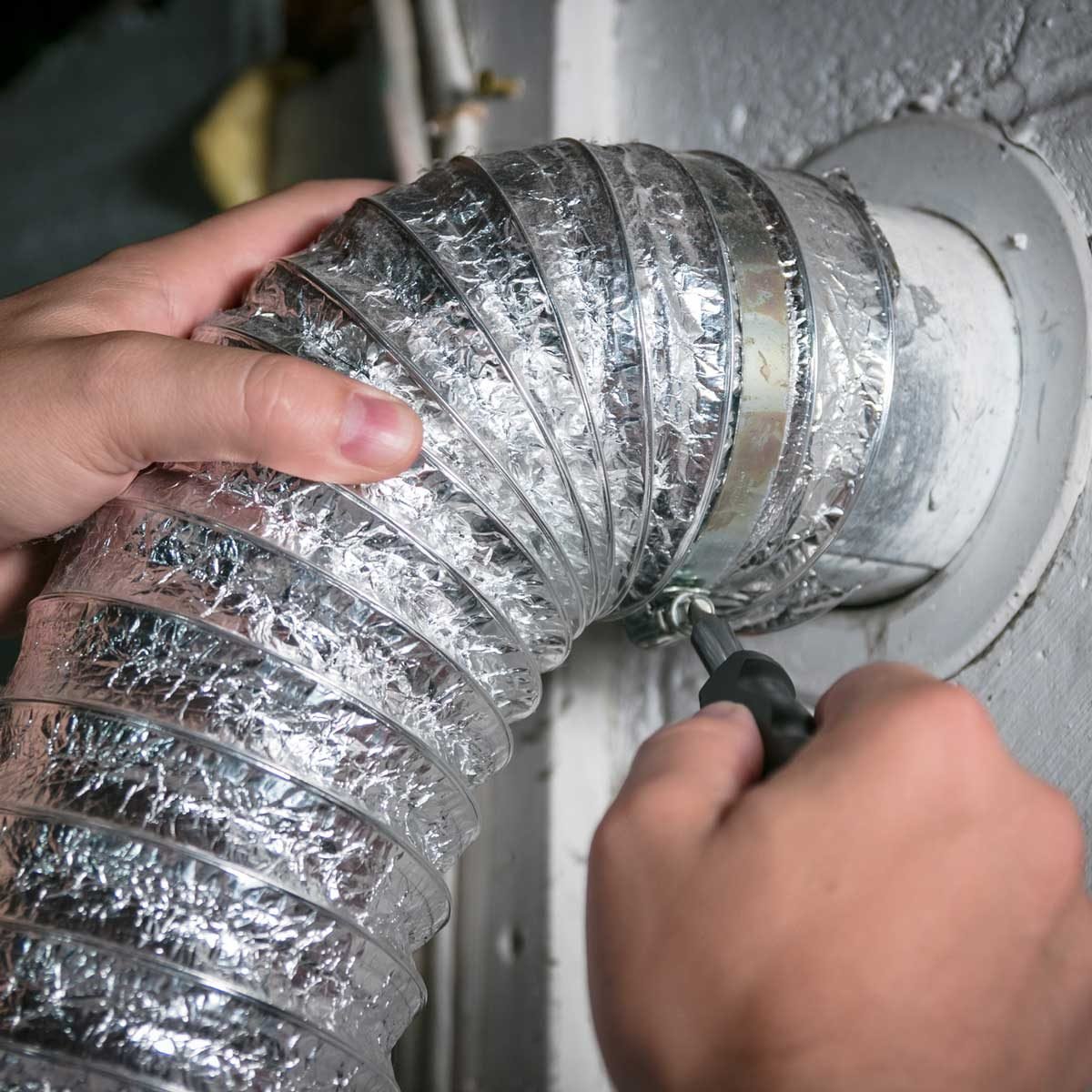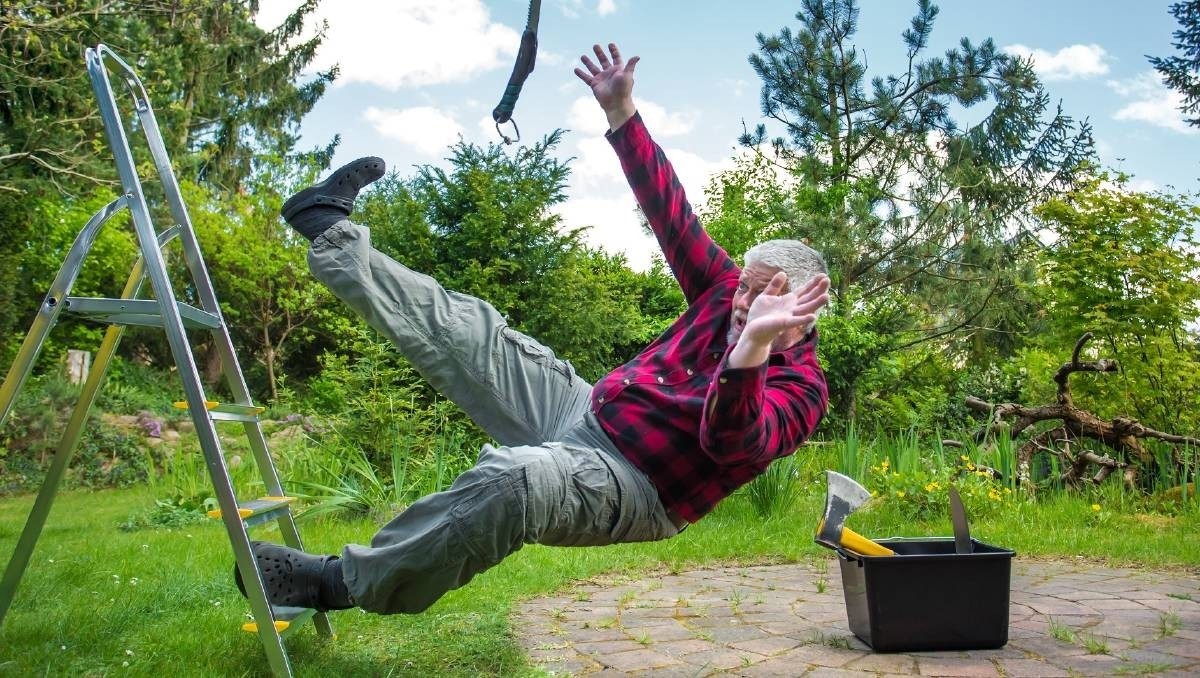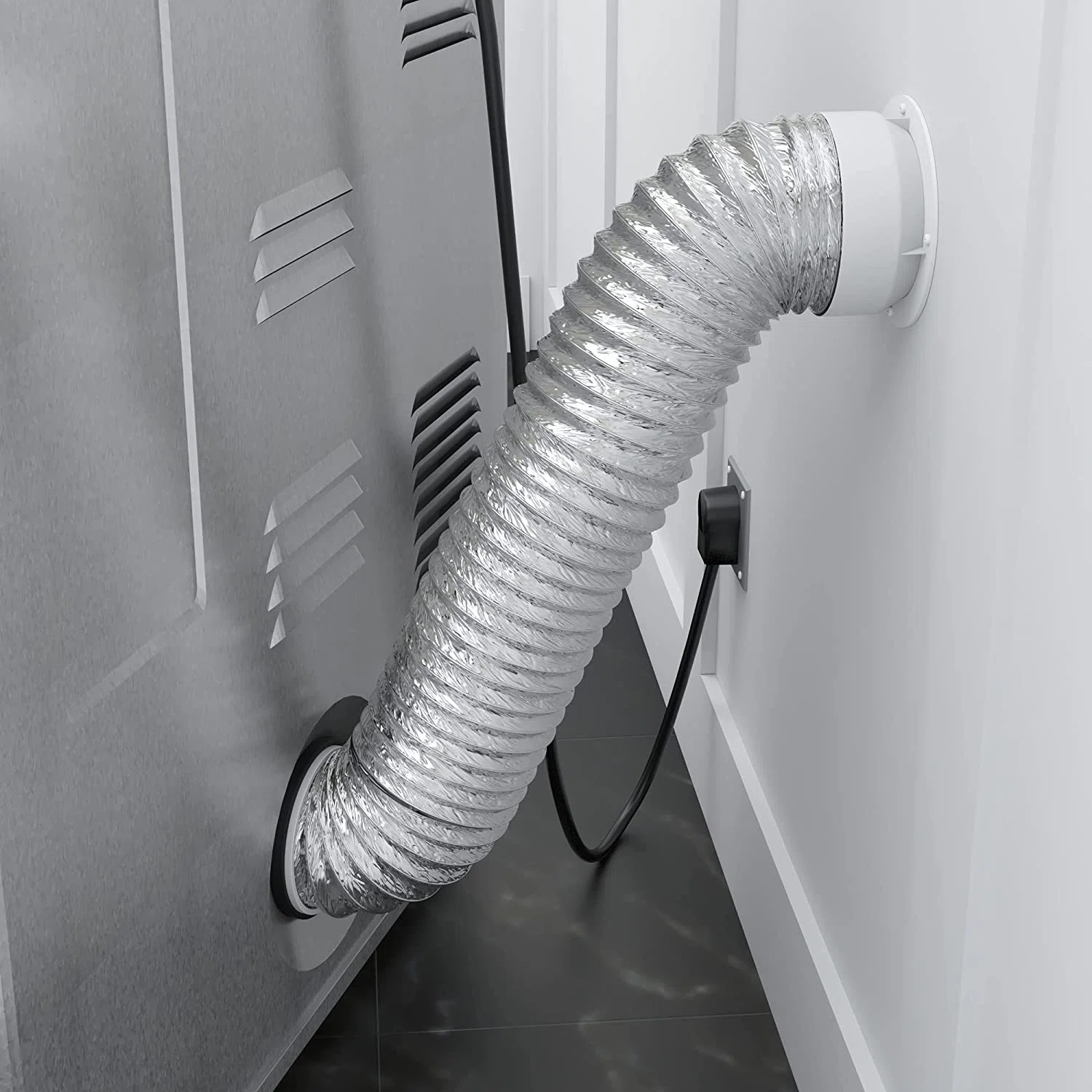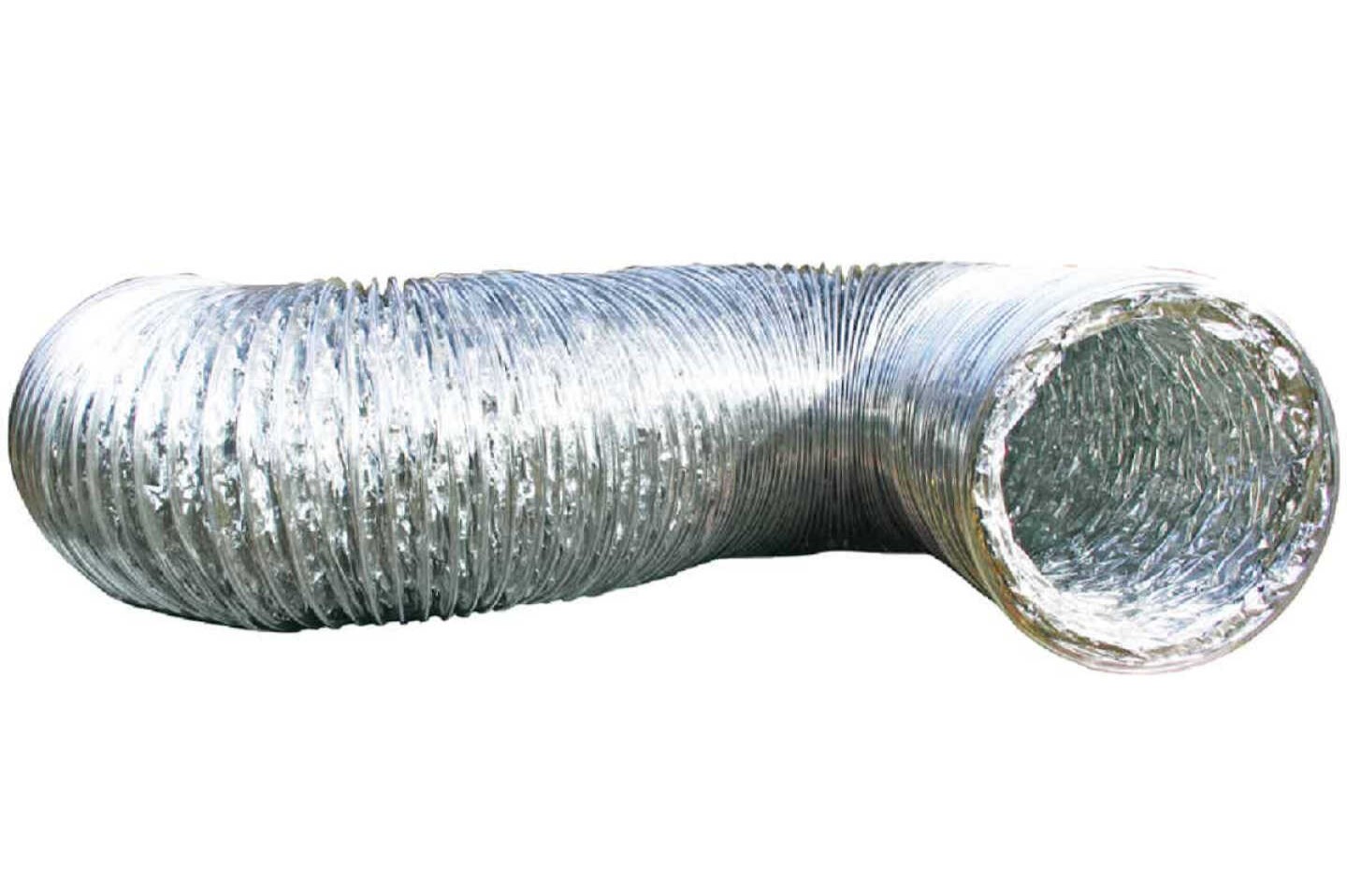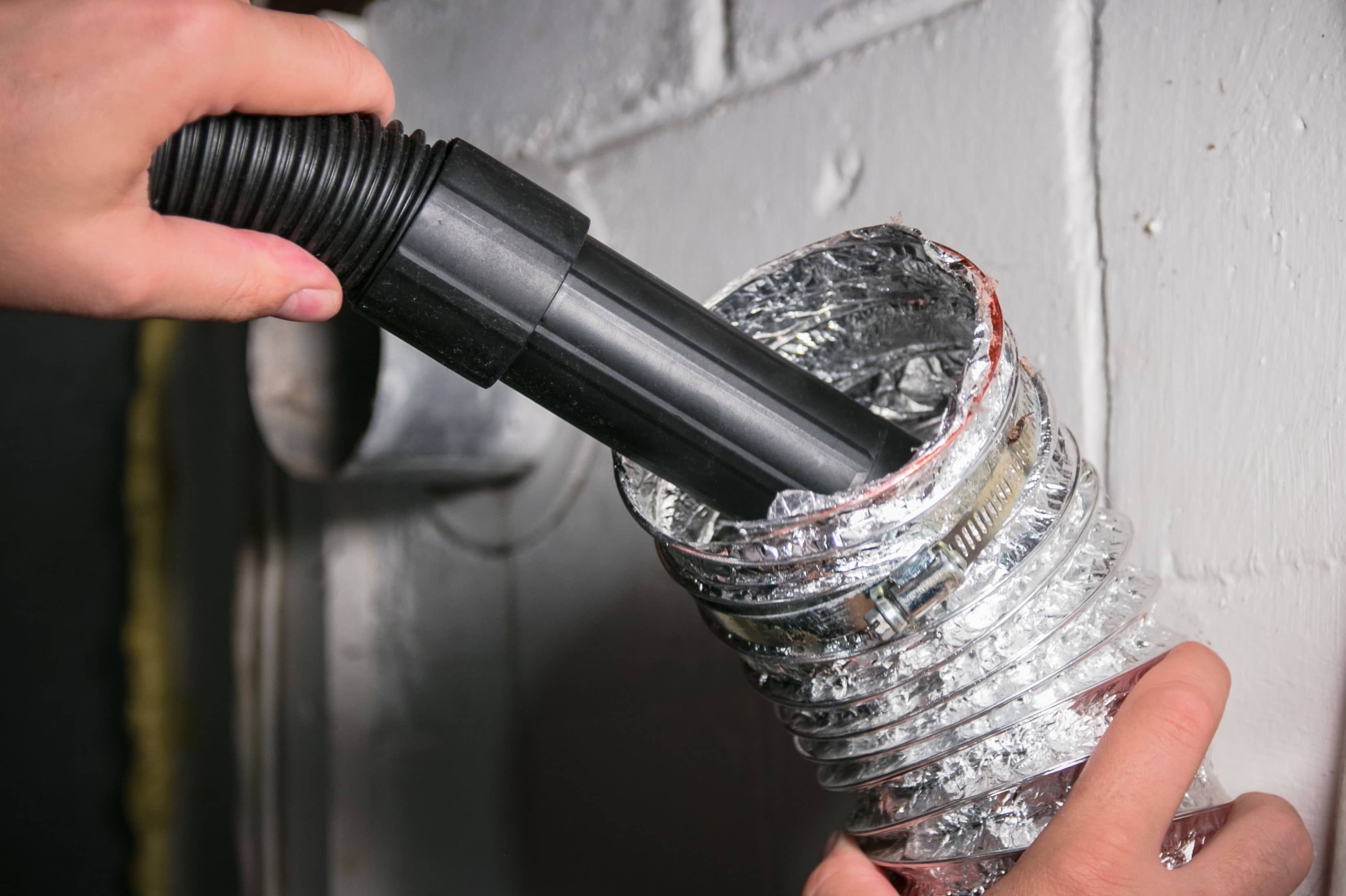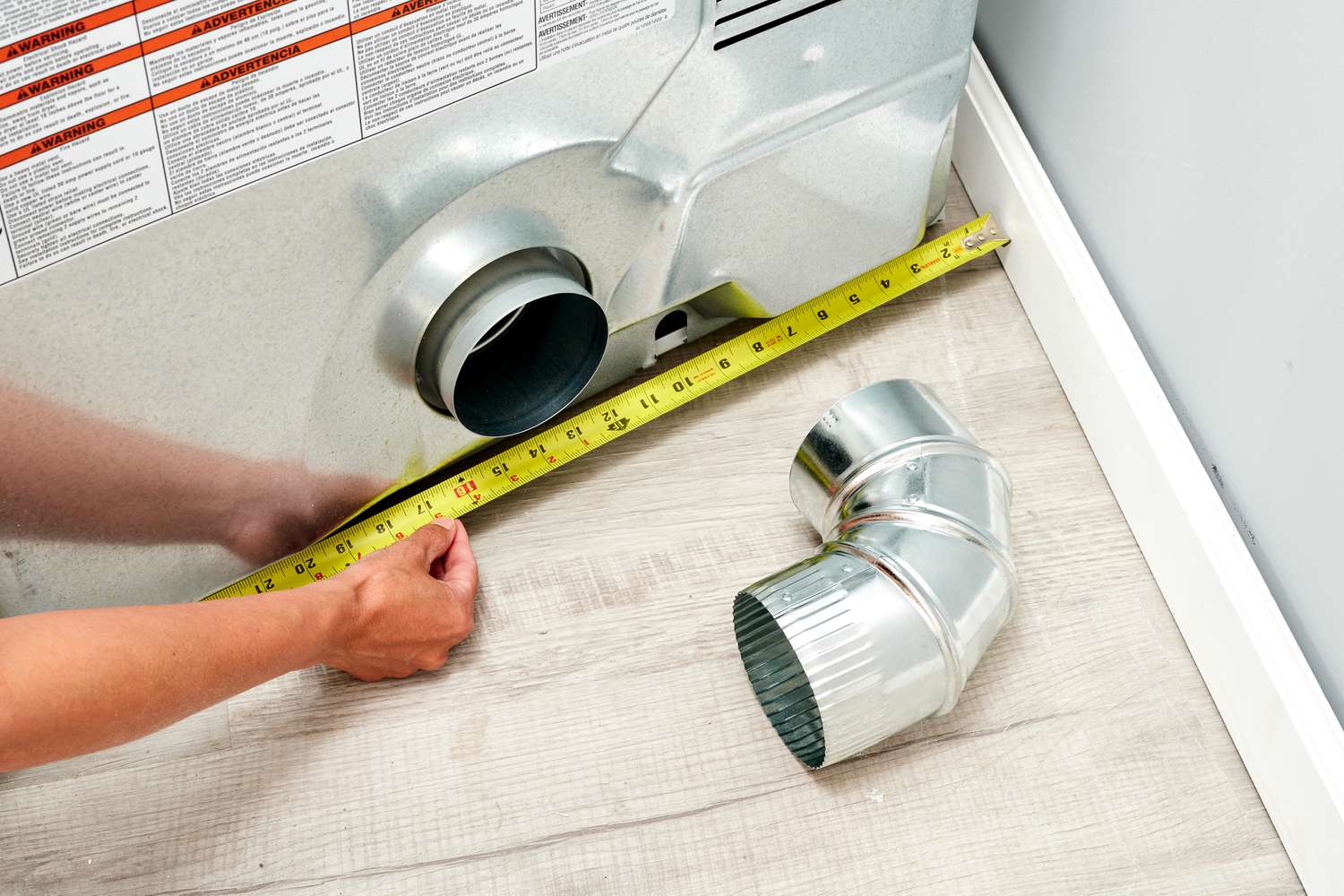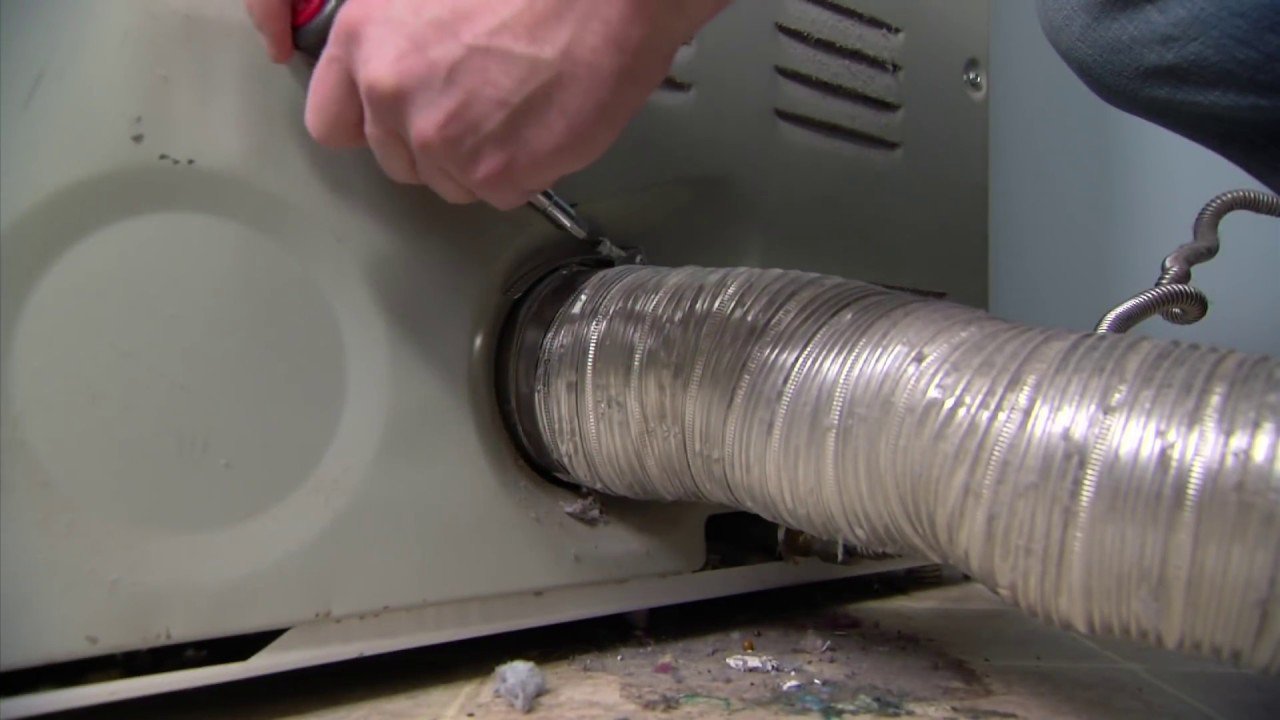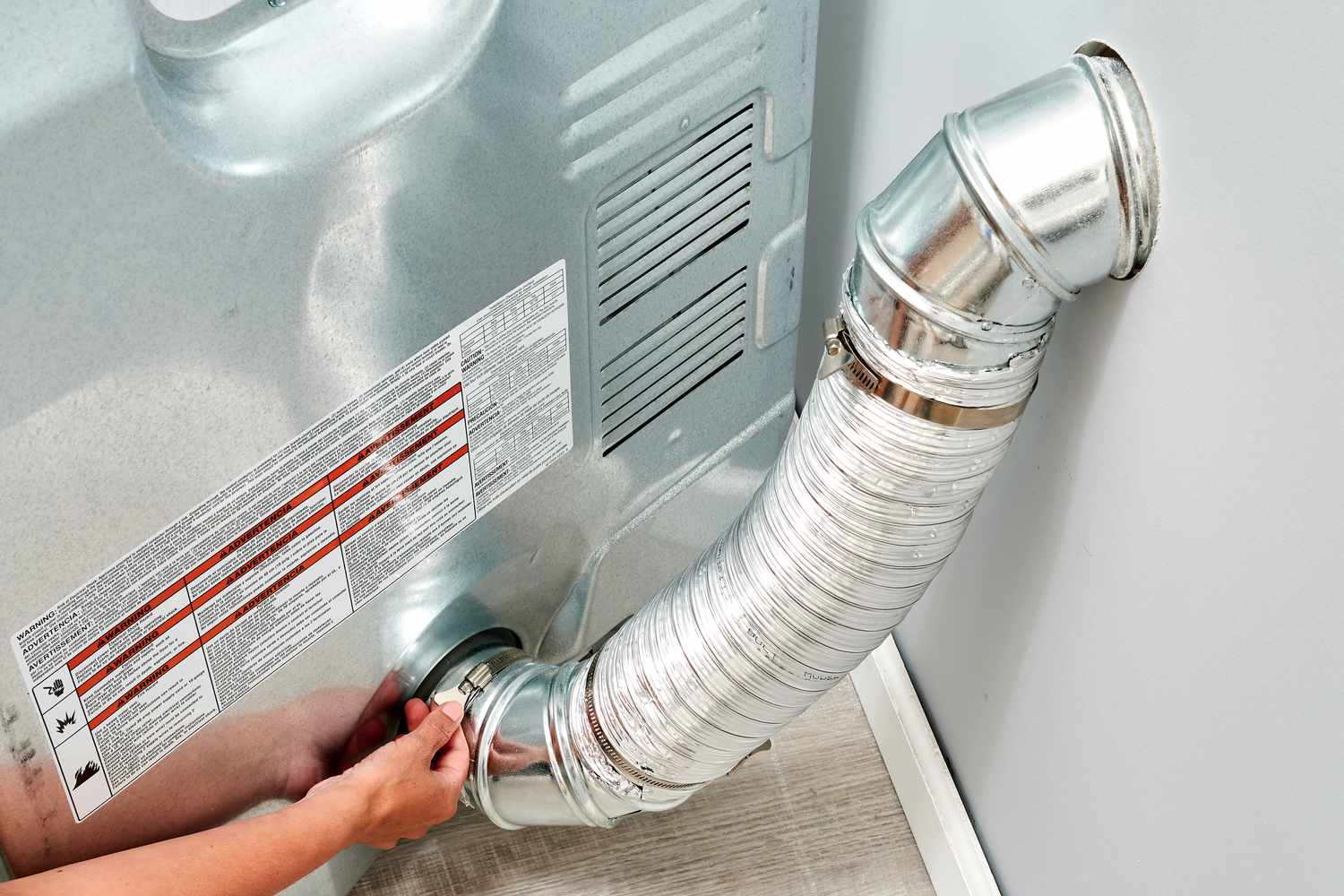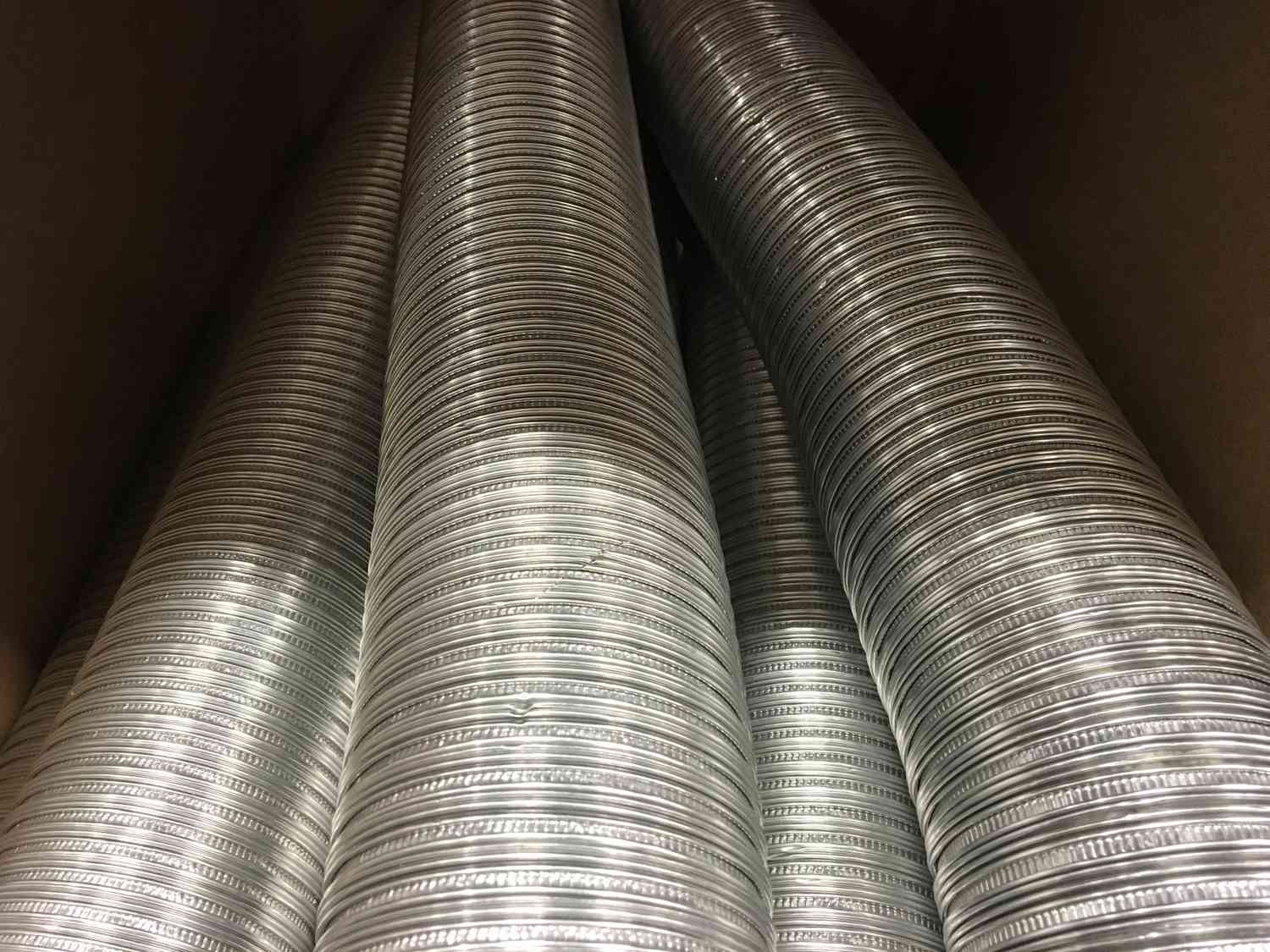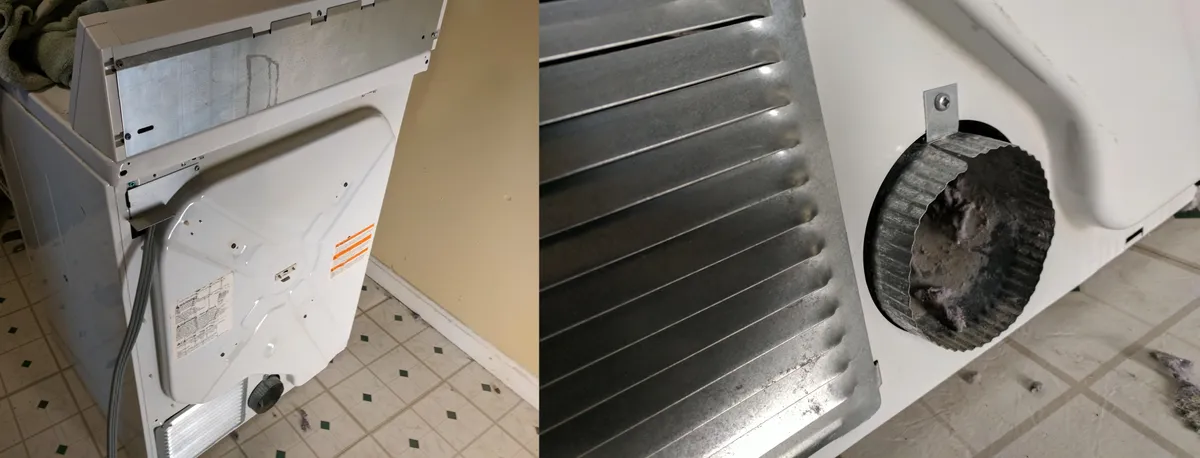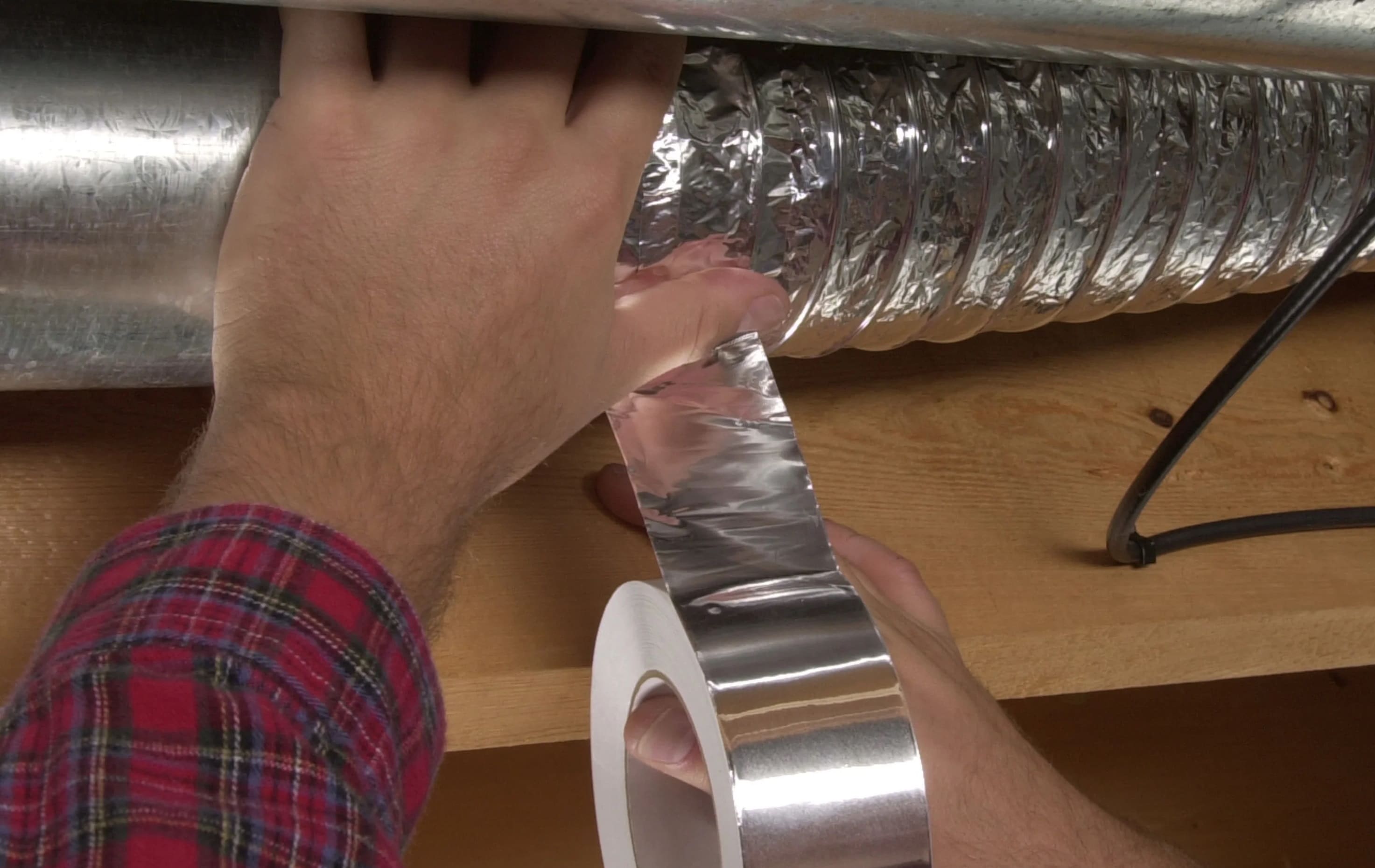Home>Home Maintenance>What Happens If A Dryer Vent Falls Off
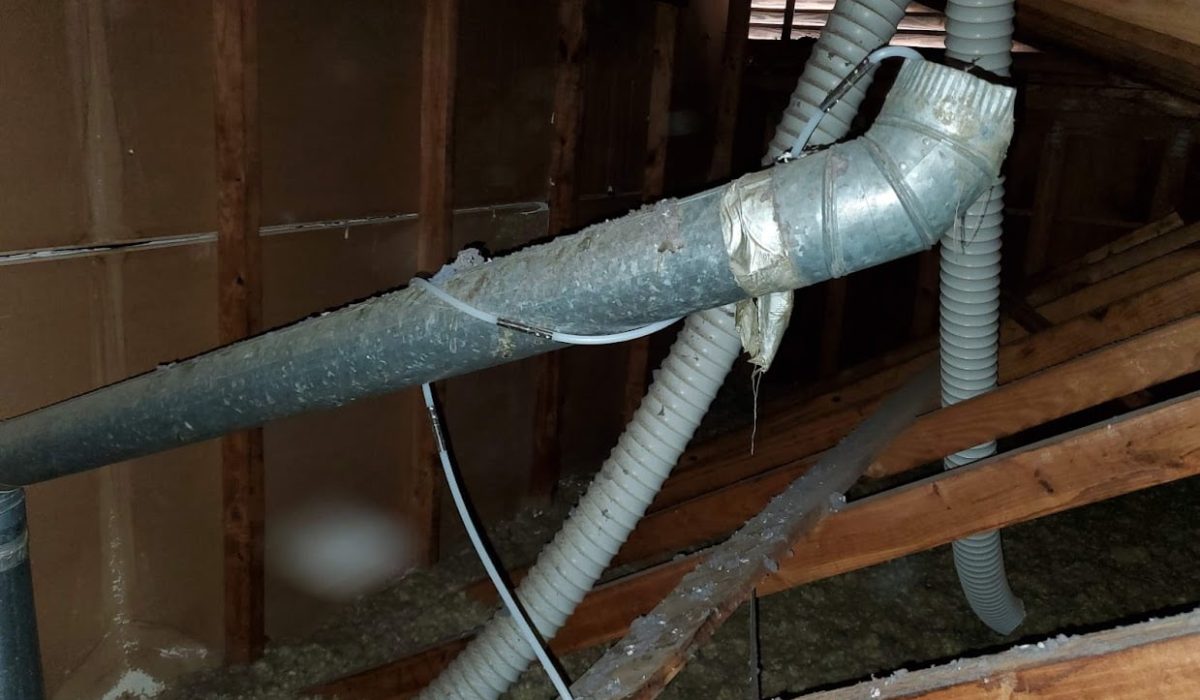

Home Maintenance
What Happens If A Dryer Vent Falls Off
Modified: March 6, 2024
Discover what happens if a dryer vent falls off and the importance of home maintenance. Keep your home safe with proper dryer maintenance.
(Many of the links in this article redirect to a specific reviewed product. Your purchase of these products through affiliate links helps to generate commission for Storables.com, at no extra cost. Learn more)
Introduction
Having a properly functioning dryer is crucial for efficient and effective home maintenance. However, one common issue that homeowners may encounter is a dryer vent falling off. The dryer vent is the ductwork that connects the dryer to the outside, responsible for expelling hot air and moisture while drying clothes.
When a dryer vent falls off, it can lead to various problems, including reduced airflow, safety hazards, and potential damage to the dryer itself. It is essential to understand the causes, consequences, signs, and necessary actions to take when faced with this issue. This article will guide you through the process of dealing with a fallen dryer vent, reattaching it, and implementing preventive measures to avoid future mishaps.
So, if you are wondering what happens if a dryer vent falls off and how to handle it, keep reading to find all the information you need to ensure your dryer operates smoothly and safely.
Key Takeaways:
- When a dryer vent falls off, it can cause longer drying times, overheating, and potential fire hazards. Prompt action and preventive measures are crucial to ensure efficient and safe dryer operation.
- Signs of a fallen-off dryer vent include excessive lint, burning smells, and unusual noises. Reattaching the vent and implementing regular maintenance can prevent damage and safety risks.
Read more: What Happens If A Hair Dryer Falls In Water
Causes of Dryer Vent Falling Off
There are several reasons why a dryer vent may fall off, and understanding these causes can help you prevent such incidents in the future. Here are some common factors that contribute to a dryer vent becoming detached:
- Poor Installation: Improper installation of the dryer vent can lead to its eventual detachment. If the vent is not securely fastened or sealed, it can easily come loose over time, causing inconvenience and potential damage.
- Aging Vent Components: Over time, the materials used in the construction of the dryer vent system can deteriorate. The constant exposure to heat and moisture takes a toll on the vent, causing connectors, clamps, or ductwork to weaken and eventually fail.
- Excessive Lint Buildup: One of the primary causes of dryer vent blockage is the accumulation of lint. When lint builds up in the vent and ductwork, it creates a restriction in the airflow. The increased pressure can cause the vent to dislodge or even disconnect altogether.
- Vibration and Movement: Dryers generate vibrations during operation, which, over time, can cause the vent connections to loosen. Additionally, if the dryer is located in an area where it experiences frequent movement or if other objects in the vicinity bump into it, the vent may become detached.
- Animal Intrusion: It’s not uncommon for small animals, such as birds or rodents, to find their way into the dryer vent. They can chew through the vent or create nests, causing damage and disconnection.
Understanding these causes will help you address any underlying issues that may contribute to your dryer vent falling off. By taking appropriate measures, you can minimize the chances of encountering this problem in the future.
Consequences of a Dryer Vent Falling Off
When a dryer vent falls off, it can have several negative consequences that impact both the functionality of your dryer and the safety of your home. Here are the main consequences to be aware of:
- Reduced Airflow: A disconnected or fallen-off dryer vent disrupts the airflow from the dryer to the outside. This restriction can significantly reduce the efficiency of the drying process. Your clothes may take longer to dry, resulting in increased drying time and energy consumption.
- Overheating and Fire Hazard: When the dryer vent is detached, the hot air and moisture that should be vented outside cannot escape properly. This trapped heat can cause the dryer to overheat, potentially leading to a fire hazard. Lint buildup in the disconnected vent can ignite, creating a dangerous situation for your home.
- Damaged Dryer Components: Without proper ventilation, a fallen-off dryer vent can cause damage to the dryer itself. The excessive heat and moisture can affect the internal components, such as the heating element, thermostat, or drum motor. This can lead to expensive repairs or, in severe cases, the need for a new dryer.
- Poor Indoor Air Quality: When hot air and moisture can’t escape through the dryer vent, it can lead to increased humidity levels in your home. This excessive moisture can contribute to mold growth and compromise the indoor air quality, potentially causing health issues.
- Increased Energy Costs: When the dryer vent is detached, it forces the dryer to work harder and longer to dry your clothes. This increased drying time leads to higher energy consumption and subsequently elevated energy bills.
- Lint Accumulation: A fallen-off dryer vent can result in lint and debris accumulating in the surrounding area. This can create a potential fire hazard and increase the need for frequent cleaning and maintenance.
It is important to be aware of these consequences so that you can take the necessary steps to address a fallen-off dryer vent promptly. By doing so, you can minimize the risks and ensure the proper functioning and safety of your dryer and home.
Signs That Your Dryer Vent Has Fallen Off
Identifying whether your dryer vent has fallen off is crucial in addressing the issue promptly. Here are some signs that indicate a disconnected or fallen-off dryer vent:
- Lengthy Drying Times: If you notice that your clothes are taking longer to dry than usual, it could be a sign that the dryer vent has become detached. Reduced airflow caused by a fallen-off vent restricts the proper expulsion of hot air and moisture, resulting in extended drying times.
- Excessive Lint Buildup: A disconnected dryer vent often leads to lint accumulation in and around the dryer. If you notice an unusual increase in lint around the lint trap, on the dryer drum, or scattered in the laundry area, it may indicate a fallen-off vent.
- Hot and Humid Laundry Room: A functioning dryer vent is responsible for carrying hot and moist air outside. When the vent is detached, the heat and moisture remain trapped inside the laundry room, causing the room to feel excessively warm and humid during and after dryer cycles.
- Burning Smell: Lint trapped in the disconnected vent can become a fire hazard. If you detect a burning smell coming from your dryer or the area around it, it is crucial to investigate and address the issue immediately.
- Visible Disconnection: In some cases, you may be able to physically see that the dryer vent has fallen off. Check the back of the dryer and the exterior vent opening to see if there is any noticeable gap or disconnection.
- Unusual Noise or Vibration: When the dryer vent is detached, it can cause changes in the airflow and create vibrations or rattling noises during operation. If you notice any unusual sounds or vibrations coming from your dryer, it may indicate a fallen-off vent.
Being vigilant and recognizing these signs can help you take the necessary steps to address a fallen-off dryer vent promptly. Ignoring these indicators can lead to more significant issues and potential hazards. If you notice any of these signs, it is crucial to investigate the situation and take appropriate action to reattach the vent.
If your dryer vent falls off, immediately stop using the dryer and do not attempt to reattach it yourself. Contact a professional to inspect and repair the vent to prevent potential fire hazards and ensure proper ventilation.
Immediate Action to Take When a Dryer Vent Falls Off
Discovering that your dryer vent has fallen off can be alarming, but it’s essential to take immediate action to address the issue. Here are the steps you should follow:
- Turn Off the Dryer: If you haven’t already done so, immediately turn off the dryer and unplug it from the power source. This is crucial for safety reasons and to prevent any further damage.
- Assess the Situation: Carefully inspect the dryer and the vent area to determine the extent of the disconnection. Check if the vent is completely detached or partially loose.
- Remove Lint and Debris: Before reattaching the vent, clean out any lint or debris that may have accumulated in the disconnected vent or the surrounding area. This will help maintain proper airflow and reduce the risk of a fire hazard.
- Gather Necessary Tools and Materials: To reattach the dryer vent, you will need some basic tools and materials, including a screwdriver, duct tape or metal clamps, and possibly a replacement vent connector if it is damaged.
- Reattach the Vent: Carefully align the dryer vent with the opening on the back of the dryer. Use the appropriate method to secure it in place, depending on the type of vent connector you have. This could involve using screws, clamps, or duct tape to ensure a secure connection.
- Test for Proper Functionality: Once the vent is reattached, turn on the dryer and run a short cycle to ensure that the hot air and moisture are properly vented outside. Check for any leaks or unusual airflow.
If you are uncomfortable or unsure about reattaching the vent yourself, it is recommended to seek professional assistance. A qualified technician can ensure that the vent is correctly installed and provide a thorough inspection of the entire dryer vent system.
Remember, taking immediate action to reattach the fallen-off dryer vent is crucial for avoiding further damage, improving the dryer’s efficiency, and ensuring the safety of your home.
Steps to Reattach a Dryer Vent
Reattaching a fallen-off dryer vent is a relatively straightforward process. By following these steps, you can ensure a secure connection and restore proper airflow:
- Gather the Required Tools: Before you begin, make sure you have the necessary tools and materials on hand. You may need a screwdriver, duct tape or metal clamps, and potentially a replacement vent connector if the existing one is damaged or missing.
- Inspect the Vent and Dryer: Take a close look at the dryer and the vent opening. Ensure that there are no obstructions or debris that could impede the reattachment process.
- Align the Vent: Position the vent connector or ductwork in line with the vent opening on the back of the dryer. Ensure that the connection is properly aligned and will provide a secure fit.
- Secure with Screws or Clamps: Using a screwdriver or appropriate clamps, fasten the vent connector to the dryer. For rigid metal vent pipes, use screws to secure the connection. If you are using flexible ductwork, use metal clamps to hold the vent in place.
- Seal with Duct Tape: After the vent is secured, wrap duct tape around the connection to further reinforce the seal and prevent any air leaks. Make sure to cover the entire connection area to create a tight seal.
- Test the Connection: Once the vent is reattached, turn on the dryer and run a test cycle. Ensure that there are no unusual noises, vibrations, or air leaks. Check that the hot air and moisture are properly vented outside.
It’s important to note that the specific steps may vary depending on the type of dryer vent and connector you have. Always refer to the manufacturer’s instructions and guidelines for reattaching the vent. If you are unsure or uncomfortable with the process, it’s recommended to consult a professional technician for assistance.
By following these steps and ensuring a secure connection, you can restore proper airflow and maintain the efficiency and safety of your dryer.
Preventive Measures to Avoid Dryer Vent Falling Off
To prevent the inconvenience and potential hazards associated with a fallen-off dryer vent, implementing preventive measures is essential. Here are some steps you can take to avoid this issue:
- Proper Installation: Ensure that your dryer vent is correctly installed from the start. Hire a professional if necessary to ensure that all connections are secure, sealed, and in compliance with local building codes.
- Regular Maintenance: Perform regular maintenance on your dryer vent system to prevent lint buildup and other issues. Clean the lint trap after each use, and schedule regular cleanings of the vent and ductwork by a professional. This helps maintain proper airflow and reduces the risk of vent blockage.
- Inspect and Replace Damaged Parts: Regularly inspect your dryer vent for any signs of wear, damage, or deterioration. If you notice any cracks, looseness, or aging components, replace them immediately. This includes vent connectors, clamps, ductwork, and exhaust hoods.
- Keep the Area Clear: Ensure that the area around the dryer is clear of obstructions, clutter, and flammable materials. Provide ample space for proper airflow and avoid placing items on top of or in front of the vent exhaust.
- Protect from Animal Intrusion: Install a vent cover or bird guard to prevent small animals from entering and nesting in the dryer vent. Regularly check and clean these covers to maintain proper airflow.
- Avoid Excessive Movement: If your dryer is located in an area prone to constant movement, such as a laundry room adjacent to a high-traffic area, consider securing the dryer and vent connections to prevent detachment due to vibration or accidental bumps.
- Stay Alert to Signs of Trouble: Be vigilant and watch for signs of a falling-off or disconnected dryer vent, such as longer drying times, excessive lint buildup, or unusual noises. Promptly investigate and address any potential issues to prevent further damage.
- Educate Household Members: Ensure that all members of your household are aware of the importance of maintaining the dryer vent system. Teach them proper dryer usage, such as cleaning the lint trap after each cycle, and how to recognize signs of a fallen-off vent.
By implementing these preventive measures, you can minimize the risk of a fallen-off dryer vent and ensure the efficient and safe operation of your dryer. Regular maintenance and vigilance are key to keeping your dryer vent system in optimal condition.
Conclusion
Maintaining a properly functioning dryer vent is essential for efficient and safe home maintenance. A fallen-off dryer vent can disrupt the airflow, create safety hazards, and lead to damage to your dryer and home. However, by understanding the causes, consequences, signs, and necessary actions, you can effectively address this issue and prevent it from happening in the future.
Taking immediate action when you discover a fallen-off dryer vent is crucial. Unplug the dryer, assess the situation, clean out any lint or debris, and securely reattach the vent using the appropriate tools and materials. Testing the connection and ensuring proper functionality are essential to restore efficient drying and minimize safety risks.
Preventive measures play a vital role in avoiding dryer vent falling off. Proper installation, regular maintenance, inspection and replacement of damaged parts, keeping the area clear, and protecting against animal intrusion are important steps to follow. Staying alert to signs of trouble and educating household members about proper dryer usage can also help prevent future issues.
By maintaining a well-maintained and properly functioning dryer vent, you can ensure efficient drying, reduce energy consumption, and minimize the risk of fire hazards. Regularly cleaning the lint trap, scheduling professional cleanings, and practicing responsible dryer usage are all part of maintaining a healthy and safe dryer vent system.
Remember, if you are unsure about any aspect of reattaching a fallen-off dryer vent or if you encounter persistent issues, it is always best to consult with a professional technician for assistance. Their expertise can provide peace of mind and help you maintain a safe and efficient dryer vent system.
By following these guidelines and staying proactive, you can ensure the longevity and safe operation of your dryer vent, providing you with hassle-free laundry days for years to come.
Frequently Asked Questions about What Happens If A Dryer Vent Falls Off
Was this page helpful?
At Storables.com, we guarantee accurate and reliable information. Our content, validated by Expert Board Contributors, is crafted following stringent Editorial Policies. We're committed to providing you with well-researched, expert-backed insights for all your informational needs.
